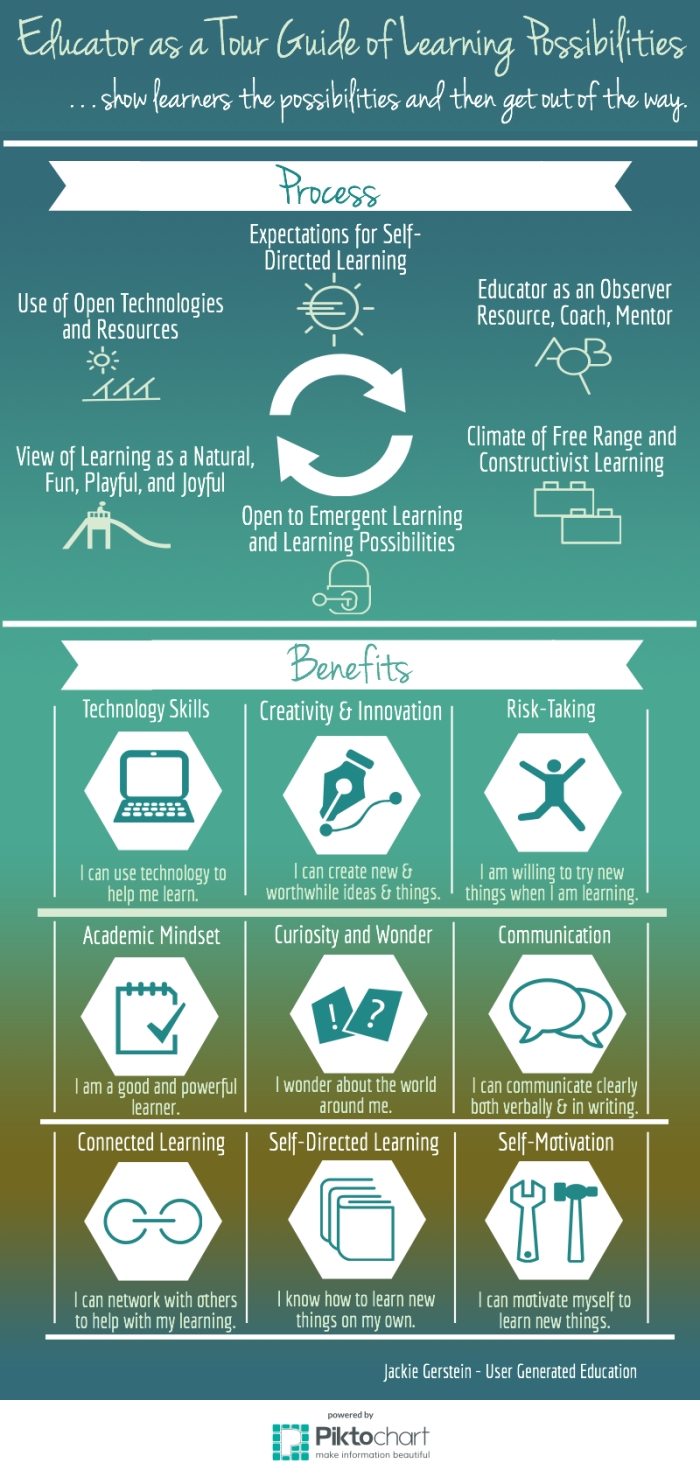Posts Tagged ‘unschooling’
A STEM Camp for Young Learners
I just finished a week long – half day STEM camp for learners, ages 7 through 12, half girls and half boys. The energy in the room throughout the week was pretty incredible. There was close to 100% engagement the entire time which is always my goal in teaching. I love turning kids onto STEM, and there is evidence that exposure at a younger age increases the chances of later interest.
Some Evidence of the Importance of STEM in the Early Years
Research tells us that children’s early experience builds brain architecture and lays the foundation for one’s lifelong thinking skills and approach to learning, both critical roots of STEM success. After all, the STEM disciplines require not only content knowledge but also robust thinking dispositions—such as curiosity and inquiry, questioning and skepticism, assessment and analysis—as well as a strong learning mindset and confidence when encountering new information or challenges. These need to be developed in a child’s early education, beginning in infancy and continuing through third grade to lay the roots for STEM success. (McClure et al., 2017) (The Roots of STEM Success: Changing Early Learning Experiences to Build Lifelong Thinking Skills)
According to a new research project, children who engage in scientific activities at an early age (between birth and age 8) develop positive attitudes toward science, build up their STEM “vocabularies” and do better at problem solving, meeting challenges and acquiring new skills. “STEM starts early: Grounding science, technology, engineering and math education in early childhood,” published by the Joan Ganz Cooney Center at Sesame Workshop and New America and supported by a National Science Foundation grant, has asserted that “the seeds of STEM must be planted early,” right alongside the “seeds of literacy.” Together, the report said, “these mutually enhancing, interwoven strands of learning will grow well informed, critical citizens prepared for a digital tomorrow.” (Research: Let’s Move STEM Learning Earlier)
The Camp
Due to the experiential nature of most of my instruction, I use an experiential cycle of learning:
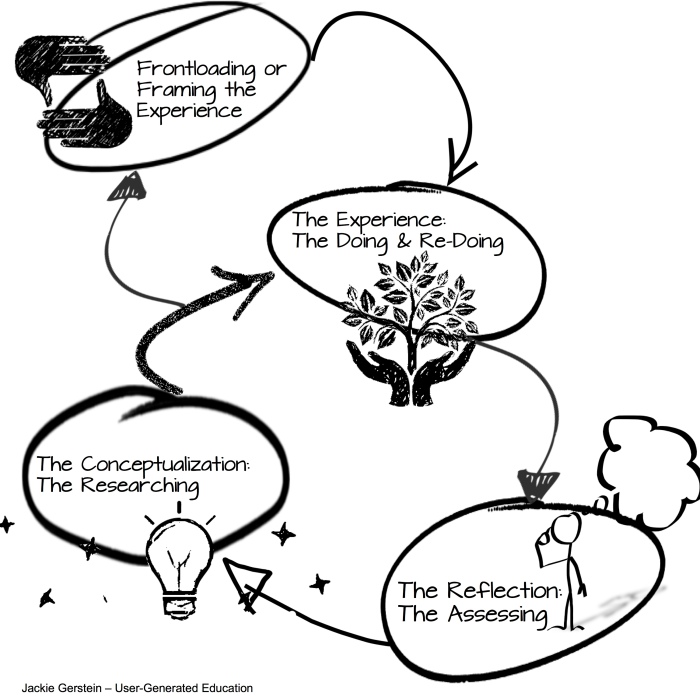
What follows is how I applied it during the STEM camp.
Framing the Activities
The STEM activities were introduced through (1) the use of Brainpop videos and their accompanying quizzes, and (2) tutorial videos and/or webpages with directions. Brainpop videos, due to their animation and humor, have a high interest value for kids, and their follow-up quizzes help to create more active learning. After the Brainpop video introduction, the campers were given an overview of the specific activities through the tutorials. I then would show them the tutorial step-by-step. For some campers, seeing the tutorial in its entirety was enough for them to do the project. Others needed me to go over the project step-by-step using the tutorials as guides. I prefer using online tutorials rather than doing them myself as demonstrations because the tutorials can be projected for a larger image and better viewing by all of the learners.
These specific resources can be found in the slide deck below:
The Doing
The camp consisted mostly of campers DOING the STEM activities. See below for a photographic journey of their engagement in the activities.
Reflection
Activity reflections occurred after the completion of the day’s activities using science journals:

https://www.lakeshorelearning.com/products/el/s/HH258
Journals such as these not only benefit the learners but the educator, too. They provide such good activity evaluation information. For example, the last day of camp, students selected two photos from the week from all of the week’s photos that represented their favorite activities. These were printed for them and they then glued the images into their journals and wrote about them. They then did a verbal check-in to tell the rest of us which ones they selected and why.
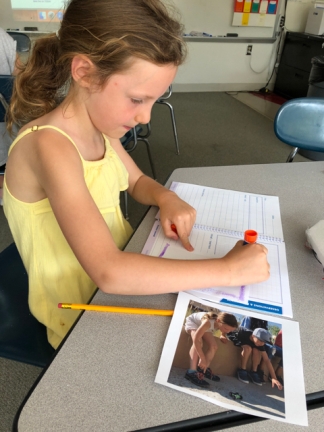
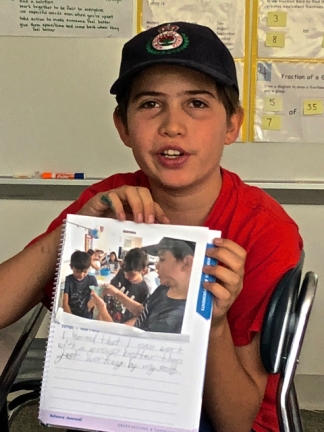
When they were sharing these with the rest of the group, one of the girls mentioned that the DIY crystals was her favorite. I was totally surprised. I thought this activity was a dude as the kids didn’t seem that excited about them. I was thinking about dropping it as a STEM activity in the future but now I will, due to her comment, consider using it again.
Our Week in Images
Chemistry – Elephant Toothpaste
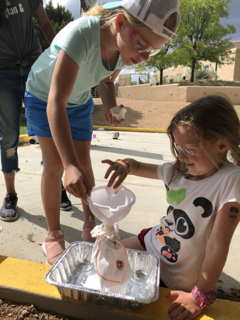
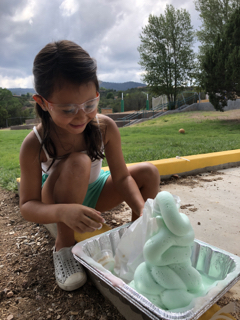
Chemistry – Slime
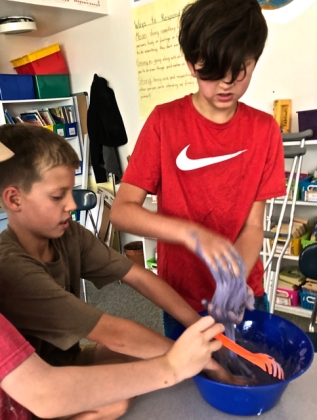
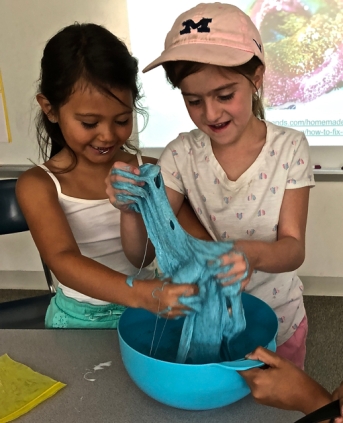
Chemistry – Orbeez Stress Balls
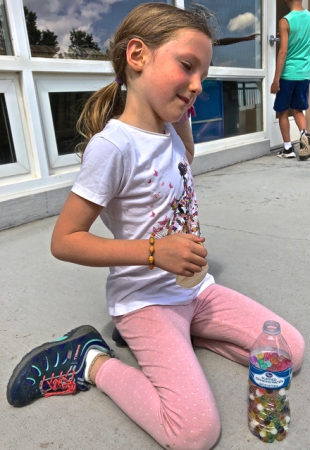

Solar – Solar Cars
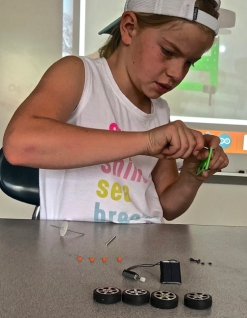
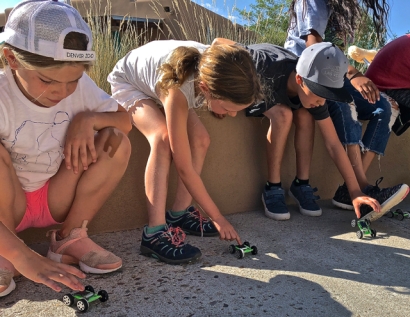
Solar – Solar Ovens
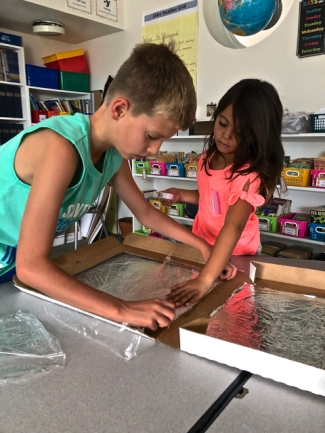
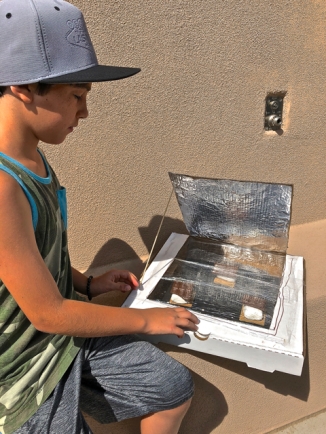
Art and Science – Geometric Structures
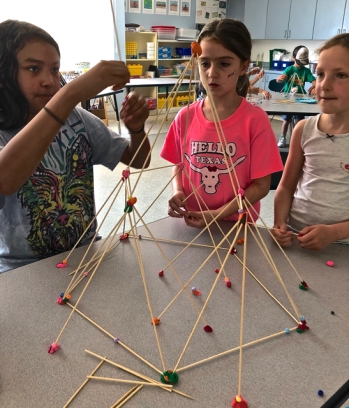
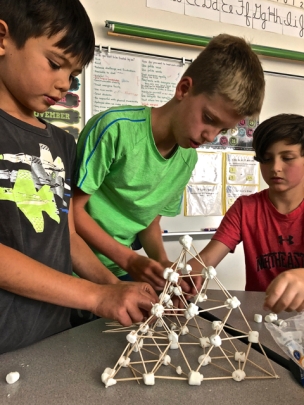
Art and Science – DIY Crystals
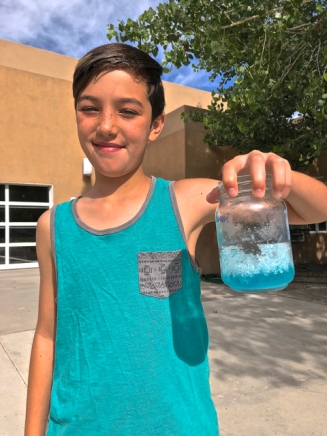
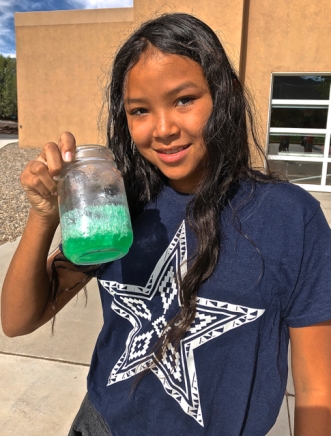
Kinetic Projects – Cranky Contraptions
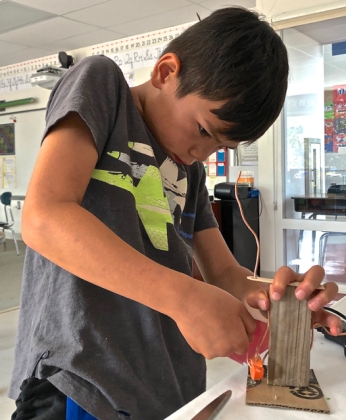
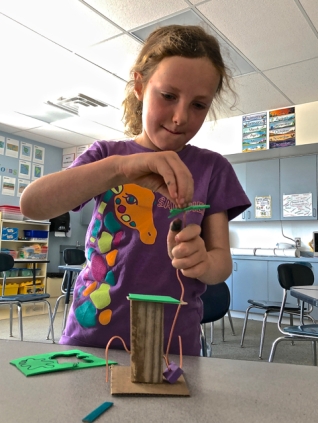
Kinetic Projects – Helium Balloon Blimp

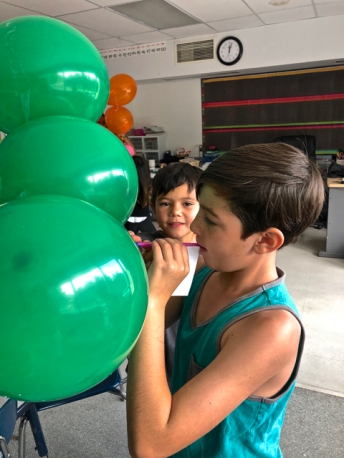
Kinetic Projects – Motor Boats
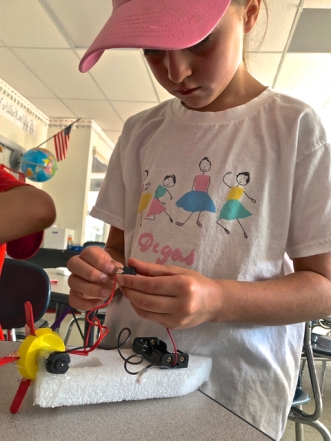
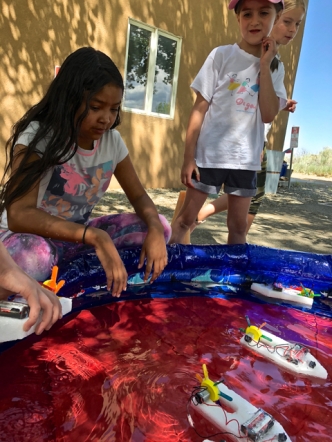
An Education Filled with Wonder
I started my journey as an educator as an outdoor educator. One of the first books I was asked to read was Rachel Carson’s A Sense of Wonder. Some quotes from this book that should (hopefully) resonate deeply with educators include:
A child’s world is fresh and new and beautiful, full or wonder and excitement. It is our misfortune that for most of us that clear-eyed vision, that true instinct for what is beautiful and awe-inspiring, is dimmed and even lost before we reach adulthood. If I had influence with the good fairy who is supposed to preside over the christening of all children I should ask that her gift to each child in the world be a sense of wonder so indestructible that it would last throughout life, as an unfailing antidote against the boredom and disenchantments of later years, the sterile preoccupation with things artificial, the alienation from the sources of our strength.
If a child is to keep alive his inborn sense of wonder, he needs the companionship of at least one adult who can share it, rediscovering with him the joy, excitement, and mystery of the world we live in.
A current focus of Michael Wesch, the renown professor from Kansas State University, is The End of Wonder in the Age of Whatever:
What is needed more than ever is to inspire our students to wonder, to nurture their appetite for curiosity, exploration, and contemplation, to help them attain an insatiable appetite to ask and pursue big, authentic, and relevant questions, so that they can harness and leverage the bounty of possibility all around us and rediscover the “end” or purpose of wonder, and stave off the historical end of wonder.
Here is clip from a keynote about this topic:
The story in his video reminded me of a day I was substituting for a 2nd grade class. It had begun to snow as we arrived to school that morning. By mid-morning, a few inches covered the ground. It was time for recess but, as expected, a voice came over the intercom to state that recess would be inside within each teacher’s classroom. I heard the kids moan as they came to school dressed for snow with boots and winter jackets. I threw caution into the wind. I asked the kids to bundle up so we could go outside. The kids became . . . well, kids. They ran through the fresh snow looking back at the footprints they created. When one found something of interest, they called the others over to see. They caught snow flakes with their tongues and made snow angles in the snow. There were no conflicts nor arguing as was common to this group of kids. They just ran, played, and laughed together as a unified group reminding me of a flock of geese. I watched them with a tear in my eye, one that reflected the beauty I was witnessing. We all experienced a sense of wonder and play that day.
Wonder can’t be planned nor scripted. Wonder rarely occurs as educators plow through pre-established, scripted curriculum, worksheets, and test preparation. I want to create the conditions for my students of all ages to have their eyes opened with and to wonder; their mouths open to say “wow”, and their hearts open to say this feels so very good.

Dream-Driven Education
Seth Godin in Stop Stealing Dreams states:
Have we created a trillion-dollar, multimillion-student, sixteen-year schooling cycle to take our best and our brightest and snuff out their dreams—sometimes when they’re so nascent that they haven’t even been articulated? Is the product of our massive schooling industry an endless legion of assistants? The century of dream-snuffing has to end. The real shortage we face is dreams, and the wherewithal and the will to make them come true. We’re facing a significant emergency, one that’s not just economic but cultural as well. The time to act is right now, and the person to do it is you.
We can teach them not to care; that’s pretty easy. But given the massive technological and economic changes we’re living through, do we have the opportunity to teach productive and effective caring? Can we teach kids to care enough about their dreams that they’ll care enough to develop the judgment, skill, and attitude to make them come true? (http://www.squidoo.com/stop-stealing-dreams)
I propose that educators take a proactive stance to move from a system that may steal kids’ dreams to one that promotes the actualization of learner dreams. I have a dream today and everyday that education can become a conduit through which learners are provided with the time, knowledge, strategies, and tools to make their own dreams come true. We are living in an era that education can be passion-based and dream-driven. In this context, the role of the educator becomes that of dream-facilitator.
The dreams we need are self-reliant dreams. We need dreams based not on what is but on what might be. We need students who can learn how to learn, who can discover how to push themselves and are generous enough and honest enough to engage with the outside world to make those dreams happen. (http://www.squidoo.com/stop-stealing-dreams)
One of the first tasks of the educator as a dream-facilitator is to discover and help his/her learners discover their dreams, passions, and interests. Some guiding questions to help learners identify and articulate their dreams include:
- Given no restrictions, what would you like to do in your spare time?
- If you could wave a magic wand and be or do anything you want, what would it be?
- In one year from now, 10 years from now, what would you like to be doing that would make you happy?
- What would your life be like if it were perfect?
Learners can be provided with a choice with how they answer theses questions: verbal or written responses, video or audio recording, or a drawing. An extension of this activity might be asking learners to create a vision board (see Vision Boards for Kids and Visions & Values for Kids). Technology could be used for this process by giving students the opportunity to create a Glog or an Animoto of images that symbolizes their dreams.
Support systems or personal learning networks could then be established based on grouping learners with similar dreams. The group would act as cheerleaders, support-providers, progress-checkers, and resource providers for one another. One of the group’s learning activities could focus on expanding their personal learning networks to include folks with similar dreams who they locate via social networks like Twitter, Tumblr, Facebook, and other social networks.
Dreams will only come try if actions are taken to achieve them. As such, the educator should facilitate a method for learners to reflect on progress towards their dreams.
- What did you do today, this week to achieve your dreams?
- What obstacles are you having or foresee having in progress towards your dream? How can you overcome your obstacles?
- What resources did you locate that can help you fulfill your dreams?
Blogging or micro-blogging (e.g. Twitter) could be used for this reflective process.
My parting shot to my pre-service teachers as they enter the world of teaching is to always remember why they became teachers in the first place. I encourage them to ask themselves each day of teaching, “What did I do today to leave a positive legacy for and with my learners?” I propose that all educators should regularly ask themselves this question. I believe that by facilitating dream-driven education, they will have a positive response to this question.
User-Generated Education: Student-Centric Education? Flipped Classroom? Google 20% Day?
I am in the process of designing and teaching a graduate course on Social Networked Learning. For the third module, the educators in the course are to go out and seek their own professional development opportunities based on their own grade level and content area interests.
This prompted me to revisit my ideas surrounding user-generated education – the inspiration for and title of this blog. A few years ago, I facilitated a conversation about user-generated education for EduCon. It was fueled by the idea that this era of learning in the 21st century should be student-centric and user-generated. An extensive list of videos, articles, and text resources on this topic can be found at http://jackiegerstein.wikispaces.com/User-Generated+Education.
This Educon conversation originated from my confusion as to why public school education is still be driven by educational essentialism when knowledge is in abundance via the Internet and when educators are no longer the gatekeepers of knowledge. Mimi Ito and others have described, in their research, how young people are getting online to connect and find others with similar interests, how they seem to be learning more in their informal learning environments than in their more formal school environments.
The urgent need to reimagine education grows clearer by the day. Research has shown that too many students are disengaged and alienated from school, and see little or no purpose to their education. Business leaders say there is a widening gap between the skills of the workforce and the needs of businesses seeking competitive advantage. Additionally, technology and the networked era threatens to stretch the already-wide equity gap in education unless there is decisive intervention and a strong public agenda (http://connectedlearning.tv/connected-learning-principles).
The major purpose of school, most would agree, is to learn. As such and given the rich array of resources available via networked learning, the time is ripe for a student-centric, progressive education. Some educators have proposed addressing this gap with Google 20% Projects and FedEx Days at school. But school is not/should not be work (aka employment). The Google Rule should be turned on its head with 80% of the time students pursuing their own interests and passions with educators acting in the role of mentors, facilitators and coaches. 20% of the other time could be spent engaging in a liberal arts education.
Given this 80% time to pursue their passions, learners could have the opportunity to become experts in their areas of interests/fields; finding resources, web links, and videos; remixing and mashing them up to gain a personal and deep meaning; and then sharing their resources, findings, and projects with their classmates. So many “needs” would be met . . .
- Students would learn the process of how to learn, how to find reputable resources, how to report their findings.
- Students would find their tribes.
- Students in their face-to-face learning environments would learn about the diversity of other student interests, possibly finding new passions and interests in the process.
PBL: Project, Passion, Play Based Learning
Effective and progressive educators understand and attempt to implement PBL strategies and practices within their learning settings. What is PBL? Project-Based Learning? Passion-Based Learning? Play-Based Learning? I contend that education, not necessarily schooling, when done “right” is all of these. How can project-based learning not include elements of passion and play? Doesn’t play connect one to his or her passions? Shouldn’t passion-based learning include the development of playful projects?
Project Based Learning
Project Based Learning is an instructional approach built upon authentic learning activities that engage student interest and motivation. These activities are designed to answer a question or solve a problem and generally reflect the types of learning and work people do in the everyday world outside the classroom. (http://pbl-online.org/)
Here is a curated Scoop.It of Project-Based Learning Resources: http://www.scoop.it/t/project-based-learning.
Passion-Based Learning
Today knowledge is everywhere – it’s easily accessible. With a couple clicks of the button, I can find content beyond my ability to absorb it in a lifetime. As a young person today, I can learn anything I want to learn at any time I want to learn it. Therefore, instead of focusing so much of our effort on the content, we really need to focus on helping them learn. We must help students understand how to synthesize and analyze and to create – to think deeply and become passionate learners.
And it’s going to be a different way of thinking when I put the learner first. Instead of me having all these preconceived ideas of what they should doing, saying and producing, I have to be open to what I find in each student. I have to discover – and help each student discover – their talents and interests and create a learning environment where they can use those gifts and passions to learn from a position of strength. Passion-based learning in the 21st century: An interview with Sheryl Nussbaum-Beach
Some resources and blog posts about Passion-Based Learning:
- Nine Tenets of Passion-Based Learning
- 9 Year Old Boy’s Arcade Creation: An Example of Passion-Based Learning
- PBL is Passion-Based Learning: Show Me Your Passion
- Passion-based learning in the 21st century: An interview with Sheryl Nussbaum-Beach
Play-Based Learning
The beauty of a play-based curriculum is that very young children can routinely observe and learn from others’ emotions and experiences. Through play, children learn to take turns, delay gratification, negotiate conflicts, solve problems, share goals, acquire flexibility, and live with disappointment. By allowing children to imagine walking in another person’s shoes, imaginative play also seeds the development of empathy, a key ingredient for intellectual and social-emotional success. from CNN’s Want to get your kids into college? Let them play
Play and its related benefits are not just for children. Stuart Brown discusses Why Play is Important, No Matter Your Age is his TED talk.
Resources:
- Why play-based learning?
- Old-Fashioned Play Builds Serious Skills
- Einstein May Never Have Used Flashcards, but He Probably Built Forts
- The Pedagogy of Play and the Role of Technology in Learning
Caine and his Arcade have been given a lot of attention and press lately. Rightfully so. It is a great example of PBL – Project, Passion, Play Based Learning. I discuss it in more depth in 9 Year Old Boy’s Arcade Creation: An Example of Passion-Based Learning.
Integrating projects, passions, and play into education in this era of learning has become a moral imperative, in my perspective. We often ask students to spend 8 or more hours of their day in the pursuit of education. Through my experiences as a student, I feel that the education system stole time in my life making me do things for which I had no interest, desire, nor use. As such, I am in a lifelong quest not to do the same to the children who are participating in our current systems.
Traditional Education is the Ultimate Filter Bubble
The Filter Bubble warns that a potential downside to filtered searching [learning] is that it “closes us off to new ideas, subjects, and important information”[7] and “creates the impression that our narrow self-interest is all that exists.”[1] It is potentially harmful to both individuals and society. http://en.wikipedia.org/wiki/Filter_bubble
Criticism towards the traditional education model typically revolves around its focus on maintaining an industrial model of education. I believe that related to this, and possibly even more damaging, is that the traditional model also creates a filter bubble of learning. Although the filter bubble is used to describe how the Internet algorithms are limiting searches to personal and confined interests, these ideas can also be used to describe traditional education. Some of the characteristics of traditional education as a filter bubble include:
- Students are grouped by age and typically similar cultural demographics as they are from the same neighborhoods.
- Students are told what to learn, when to learn it, and how to learn it.
- The topics to be covered, standards to be achieved, and curriculum to learn are mostly determined by the government.
- Textbooks and testing instruments are written by a few individuals who decide what is important to learn and know.
- Corporations decide which textbooks and testing instruments to highlight and disseminate.
- Conformity is rewarded, diversity of thoughts and opinions is not.
- Students who do not fit into the filter bubble are failed, asked to leave the system, or quit.
Illustration by Susan Sanford – see http://www.sanfordillo.com/
More Disruption of Education
Several posts this month added to the discussion of . . . . and hopefully movement towards – the disruption of institutionalized K-12 and Higher Education.
Disrupting K-12 Education
Standards-Based Accountability’s High Stakes by Ronald A. Wolk was posted in Education Week on 3/7/11. The first part of the article provides some evidence of the failure of the goal of the late 20th century to actualize, “All children can learn” (in school). Wolk goes on to ask “How do we explain that nearly 30 years of unprecedented effort and enormous expenditures has not improved student performance, reduced the dropout rate, or closed the achievement gap?”
More standardization is not what our schools need. As the Harvard business professor Clayton Christensen puts it in his book Disrupting Class, applying his ideas about “disruptive innovation” to education: “If the nation is serious about leaving no child behind, it cannot be done by standardized methods. Today’s system was designed at a time when standardization was seen as a virtue. It is an intricately interdependent system. Only an administrator suffering from virulent masochism would attempt to teach each student in the way his or her brain is wired to learn within this monolithic batch system. Schools need a new system.”
Wolk proposes that disruption of K-12 education can occur through personalized education. Some of his recommendations include:
- Schools should be designed around the human scale because students and teachers need to know each other
- Preschool education would be universal.
- Beginning in middle school, multiple educational pathways would lead to college and other postsecondary programs to prepare young people for work in a complex and changing world. A student could choose a pathway reflecting his or her interests and aspirations. Each student would play a significant role in designing the curriculum, which would be anchored in the real world, not in the abstractions of most classrooms.
- There would be no “traditional” core curriculum with typical academic courses and rigid schedules in middle and high school.
- Teachers would become advisers who guide students in educating themselves. They would tutor students and help them manage their time and energy.
- Technology would largely replace textbooks and worksheets.
- Student learning would be assessed on the basis of portfolios, exhibitions, special projects and experiments, and recitals and performances—real accomplishments, not abstract test scores.
Disrupting College
A report was published entitled, Disrupting College: How Disruptive Innovation Can Deliver Quality and Affordability to Postsecondary Education (February, 2011) by Clayton M. Christensen, Michael B. Horn, Louis Caldera, and Louis Soares.
The propositions of this report revolve around the use of online learning to be the disruptive force in higher education.
This emerging disruptive innovation presents an opportunity to rethink many of the age-old assumptions about higher education—its processes, where it happens, and what its goals are.
But the major recommendations they make for policy makers (and to that I add administrators, board members, faculty, and yes, students as the consumers of higher education) are application to both online and face-to-face institutions of higher education:
- Eliminate barriers that block disruptive innovations and partner with the innovators to provide better educational opportunities.
- Remove barriers that judge institutions based on their inputs such as seat time, credit hours, and student-faculty ratios.
- Do not focus on degree attainment as the sole measure of success.
- Fund higher education with the aim of increasing quality and decreasing cost.
An Example Grassroots Effort -An Alternative for Getting a Higher Education
The Peer 2 Peer University is a grassroots open education project that organizes learning outside of institutional walls and gives learners recognition for their achievements. P2PU creates a model for lifelong learning alongside traditional formal higher education. Leveraging the internet and educational materials openly available online, P2PU enables high-quality low-cost education opportunities. P2PU – learning for everyone, by everyone about almost anything.
